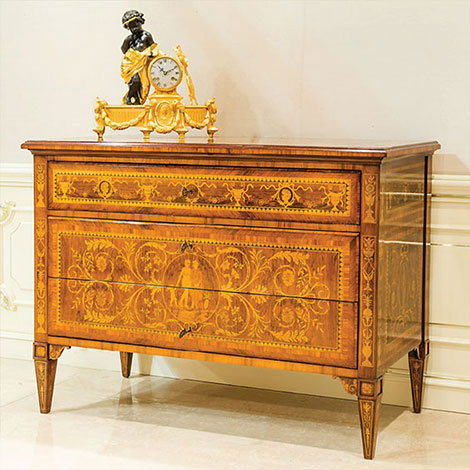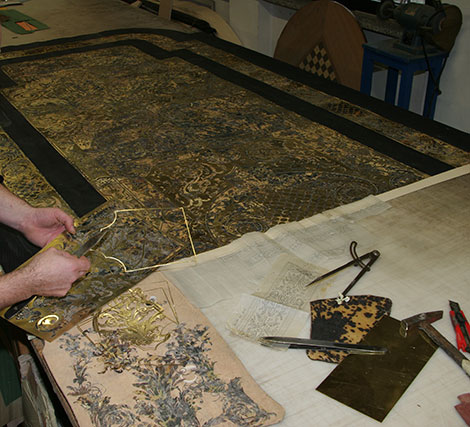The technique of applying thin sheets of precious wood, such as walnut, to another cheaper wood, was already known to ancient Egyptians, Greeks and Romans: veneering as a parsimonious method of working.
Inlay was also used by very ancient civilizations, and inlay woodwork resumed in Italy in the fifteenth century; wood was cut out where the inlay was to be inserted, and various wooden pieces in other colors were slotted in to form the desired design. From Italy, the Renaissance techniques for creating antique inlaid furniture spread throughout Europe.
In the seventeenth and eighteenth centuries the wood was cut into veneer varying between 3 and 6 mm in thickness using primitive means and wasteing a lot of material. The cutting of the veneer can be done along the medullary rays, and in this case you obtain the 'rigatino' design; if tangential to the circumference you obtain the 'flame', and near branches or roots you obtain 'roots'. There are also other methods.
The modern technique know as inlay is in fact marquetry, which, unlike inlay, which was embedded in solid wood, is a slab made up of different woods, sometimes coupled with materials such as ivory, tortoiseshell, mother of pearl, pewter, brass and copper combined as a puzzle to create decorative elements. Veneers of different types and colors were usually superimposed on top of each other forming several layers; the design to be executed was pasted onto the first sheet and then cut.
With this method, it was possible to cut several layers in a fairly precise way, then to assemble them like a puzzle in the processing of antique inlaid furniture.

